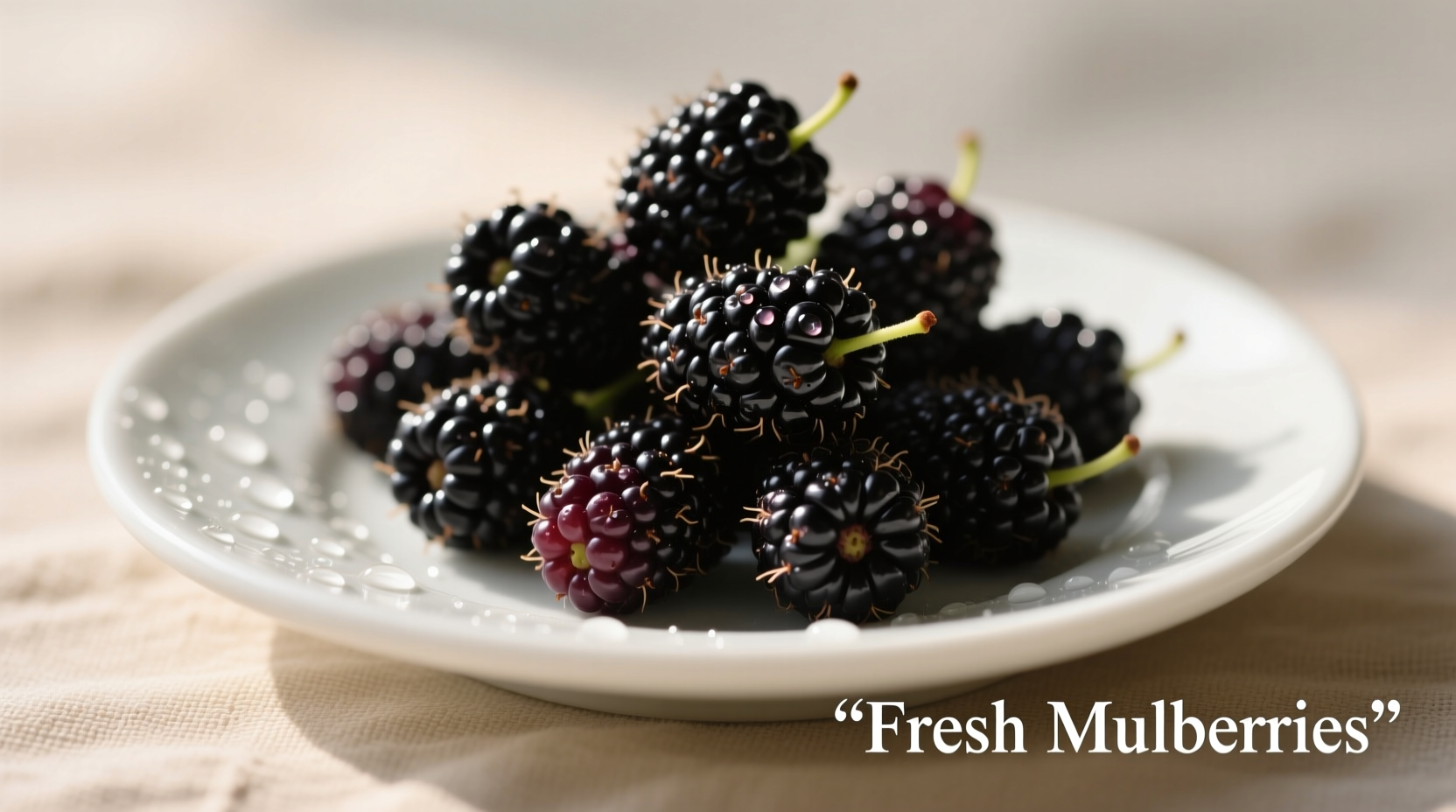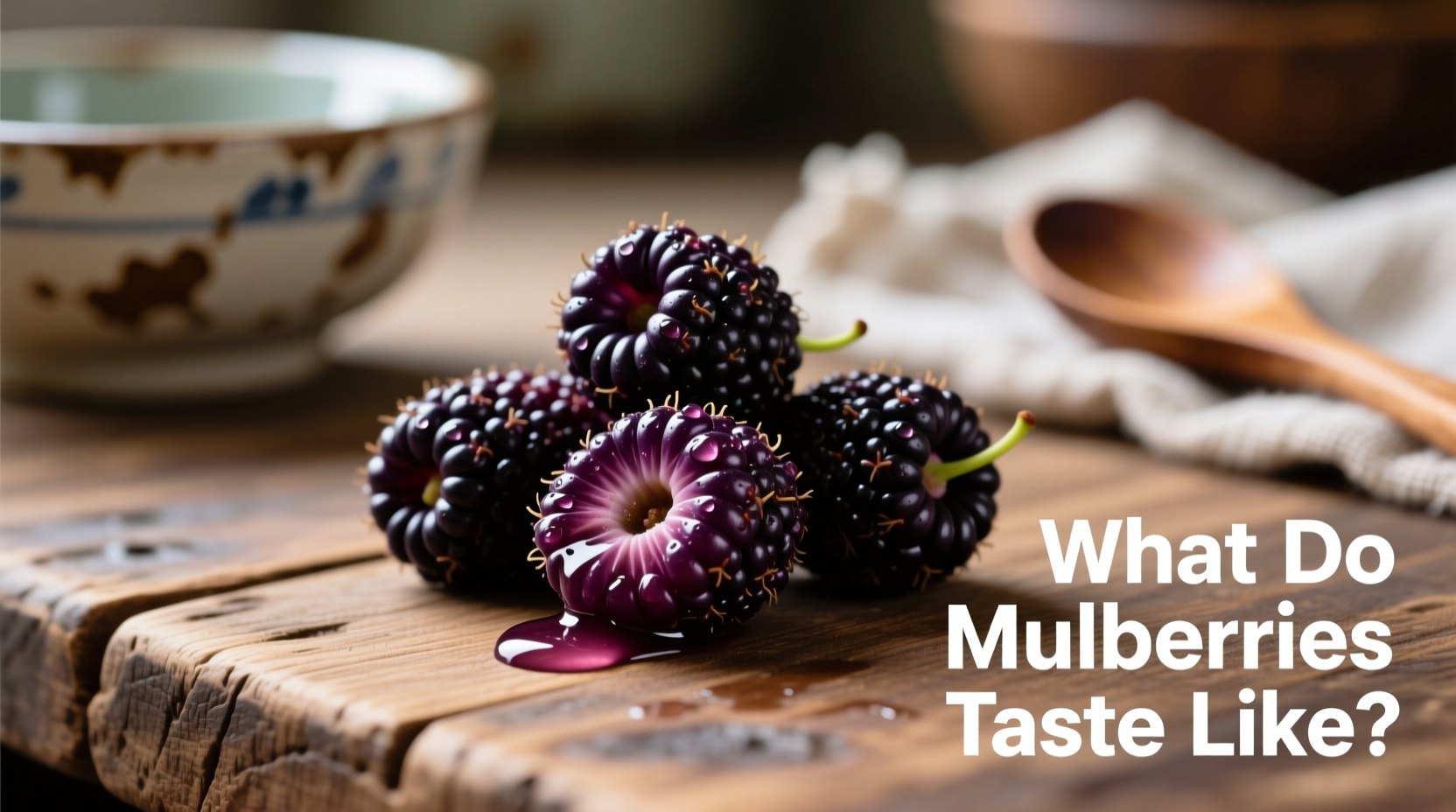Mulberries taste like a sweet-tart blend of blackberries, grapes, and watermelon with subtle woody undertones. Ripe black mulberries offer the most complex flavor profile—juicy, moderately sweet (10-12 Brix), and slightly tangy—while white mulberries lean sweeter and red varieties strike a balanced middle ground.
Ever wondered whether those dark purple berries hanging from your neighborhood tree would satisfy your sweet tooth? You're not alone. Thousands search what do mulberries taste like each season, hoping to identify these elusive fruits before taking a bite. As a chef who's worked with seasonal produce for over 15 years, I'll break down exactly what to expect from each mulberry variety, how ripeness transforms their flavor, and why they're becoming the secret ingredient in gourmet kitchens worldwide.
The Flavor Profile Breakdown
Mulberries deliver a surprisingly complex taste experience that changes dramatically as they ripen. Unlike many fruits that simply get sweeter, mulberries undergo a complete flavor transformation:
- Unripe (green/white): Sharp, astringent, and slightly bitter—best avoided
- Mid-ripeness (pink/red): Noticeable tartness with emerging sweetness
- Fully ripe (deep purple/black): Balanced sweet-tart profile with floral notes
The secret lies in their sugar-acid ratio. According to USDA agricultural studies, ripe black mulberries reach 10-12° Brix (sugar measurement), comparable to ripe blackberries but with lower acidity than raspberries. This creates that distinctive what flavor are mulberries experience—simultaneously refreshing and satisfying.
| Fruit | Sweetness Level | Distinctive Flavor Notes | Texture Comparison |
|---|---|---|---|
| Black Mulberry | Moderate-Sweet | Grape, blackberry, subtle wood | Softer than blackberry |
| Red Mulberry | Balanced | Watermelon, raspberry | Juicier than blackberry |
| White Mulberry | Very Sweet | Honey, sugar cane | Firmer, less juicy |
| Blackberry | Sweet-Tart | Earthy, wine-like | Firmer, seedy |
How Ripeness Changes Everything
Understanding how ripe mulberries taste is crucial—they're among the few fruits that become dramatically more flavorful after picking. University of California agricultural research shows mulberries continue ripening off the tree for 24-48 hours, developing complex flavor compounds as chlorophyll breaks down.
Here's what happens during ripening:
- Day 1 (just picked): Mild sweetness with noticeable tartness
- Day 2: Sugar content increases 15-20%, tartness mellowing
- Day 3: Peak flavor with honeyed notes emerging
This post-harvest ripening explains why farmers' market mulberries often taste better than grocery store varieties—they're typically picked at optimal ripeness rather than shipped green.

Varietal Differences You Should Know
Not all mulberries taste alike. The three main types offer distinct flavor experiences:
Black Mulberries (Morus nigra)
The most flavorful variety, native to Southwest Asia. These deliver the complex what do black mulberries taste like profile many search for—intensely aromatic with wine-like depth. Their flavor contains subtle tannins that create a mouthwatering quality similar to优质 red grapes. Food scientists at the University of Reading note these contain higher anthocyanin levels, contributing to both their deep color and sophisticated flavor profile.
Red Mulberries (Morus rubra)
Native to North America, these offer a brighter, more straightforward sweetness. Think what do red mulberries taste like—reminiscent of watermelon with raspberry undertones. They're less complex than black varieties but juicier and more consistent in flavor. According to Missouri Botanical Garden research, they contain higher malic acid levels, creating that refreshing tartness.
White Mulberries (Morus alba)
Despite the name, these range from pale green to pink when ripe. They answer the question what do white mulberries taste like with pure, honey-like sweetness—almost no tartness. Popular in Asian cuisine, they're the sweetest variety but lack the complexity of darker types. Their mild flavor makes them ideal for delicate desserts where you want fruit flavor without acidity.
Practical Taste Applications
Knowing what mulberries taste similar to helps in the kitchen. Professional chefs use their unique profile in three key ways:
As a Natural Sweetener
White mulberries work like nature's simple syrup. Their high fructose content (up to 9g per 100g) makes them perfect for:
- Infusing vinegars without added sugar
- Sweetening yogurt or oatmeal naturally
- Creating no-sugar-added fruit compotes
For Complex Flavor Layering
Black mulberries add sophisticated depth to dishes. Their subtle tannins interact with fats and acids differently than other berries:
- Pair unexpectedly well with aged cheeses
- Enhance dark chocolate desserts without overwhelming
- Add complexity to barbecue sauces (try mulberry-bourbon glaze)
Texture Considerations
Mulberries' delicate structure affects how their flavor is perceived. Unlike berries with firm skins, they release juice immediately when bitten, creating an intense initial flavor burst. This makes them ideal for:
- Fresh applications (salads, tarts)
- Quick sauces where texture matters less
- Avoid in dishes requiring long cooking (they break down completely)
How to Select the Best-Tasting Mulberries
Your search for what do mulberries taste like when ripe ends with proper selection. Follow these field-tested guidelines:
Visual Indicators
- Color: Deep, uniform hue without green patches
- Gloss: Slightly shiny (dull = overripe)
- Stem: Naturally detached (forced detachment = unripe)
Sensory Testing
The definitive test? Gently squeeze one berry between fingers:
- Perfect ripeness: Yields slightly with deep color bleeding
- Underripe: Firm with minimal color transfer
- Overripe: Mushy with excessive juice
According to Cornell University's agricultural extension, this tactile test proves more reliable than color alone, as some varieties maintain reddish tones even when fully ripe.
Storage Secrets for Maximum Flavor
Mulberries lose flavor quality faster than most berries. To preserve that distinctive what do mulberries taste like fresh experience:
- Never wash until ready to eat (moisture accelerates spoilage)
- Store in single layer on paper towel-lined container
- Refrigerate maximum 2 days for peak flavor
- Freeze on parchment paper before transferring to bags
Food science research shows mulberries begin losing volatile flavor compounds within 6 hours of harvest. For best results, consume within 24 hours of picking—they're among the most perishable common fruits.
Common Flavor Misconceptions
Several myths persist about mulberry taste. Let's clarify:
- Misconception: All mulberries taste like figs
Reality: While both have complex profiles, mulberries lack figs' distinctive milky undertones - Misconception: Unripe mulberries are safe to eat
Reality: Green mulberries contain latex that can cause stomach upset—wait for full color change - Misconception: Mulberries taste identical to blackberries
Reality: Blackberries have earthier, more tannic profile; mulberries are brighter and more grape-like
These distinctions matter when answering the fundamental question what do mulberries taste like compared to other berries. Their unique flavor bridge between grapes and berries makes them irreplaceable in certain recipes.











 浙公网安备
33010002000092号
浙公网安备
33010002000092号 浙B2-20120091-4
浙B2-20120091-4